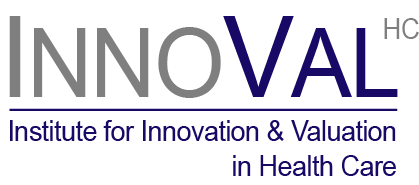Appraising the Appraisers: International HTA Outcomes
In most European health care systems, Health Technology Assessment (HTA) has been implemented as a tool to support decision-making. It is generally understood as an evidence-based comprehensive evaluation process. In practice, HTA predominantly rests on two pillars: the assessment of clinical benefit drawing on principles of evidence-based medicine (EBM), and an evaluation of efficiency, usually by means of some variant of cost-effectiveness analysis (CEA).

However, evaluation results of international HTA agencies vary conspicuously. In part, the variation can be traced back to differences in legal and institutional contexts and evaluation criteria.
Beyond their participation in HTA processes at various levels, scientists at InnoValHC studied the extent to which different methodological choices by European HTA agencies are associated with different HTA outcomes. Research included HTAs by the National Institute for Health and Care Excellence (NICE) in England and Wales, by the Federal Joint Committee (Gemeinsamer Bundesausschuss, GBA) and the Institute for Quality and Efficiency in Health Care (Institut für Qualität und Wirtschaftlichkeit im Gesundheitswesen, IQWiG) in Germany, and the Haute Autorité de Santé (HAS) in France.
Overall, our research indicates not only substantial variation in HTA outcomes, with NICE appearing more innovation-friendly compared to IQWiG/GBA – our findings also point to indication- or therapeutic area-specific differences. In general, both GBA/IQWiG and NICE follow their official evaluation criteria in a consistent manner; GBA appraisals and IQWiG assessments rest on a strict and highly codified interpretation of the principles of evidence-based medicine (EBM), whereas NICE recommendations are largely driven by the incremental cost per quality-adjusted life year (QALY) gained.
